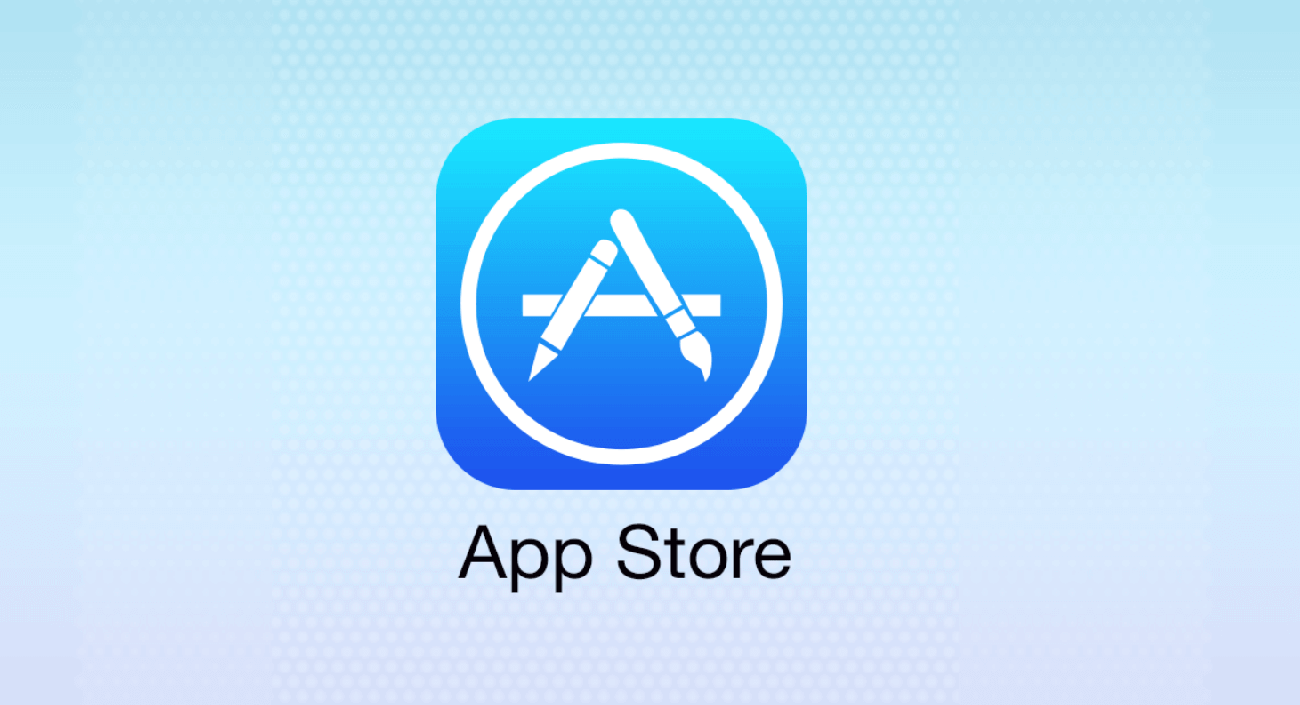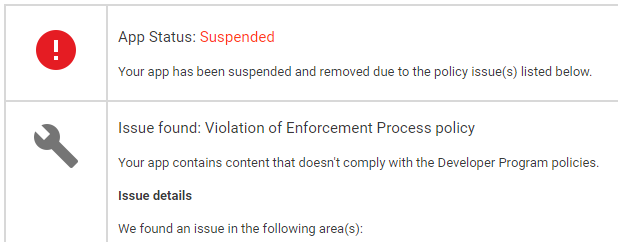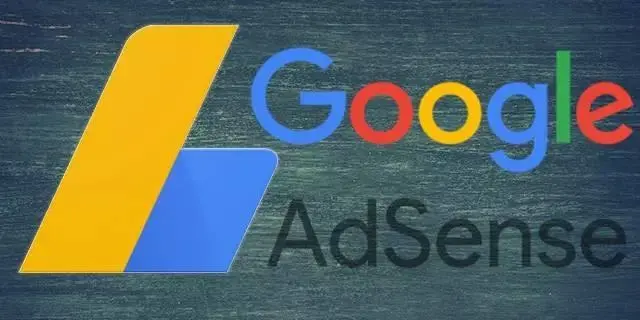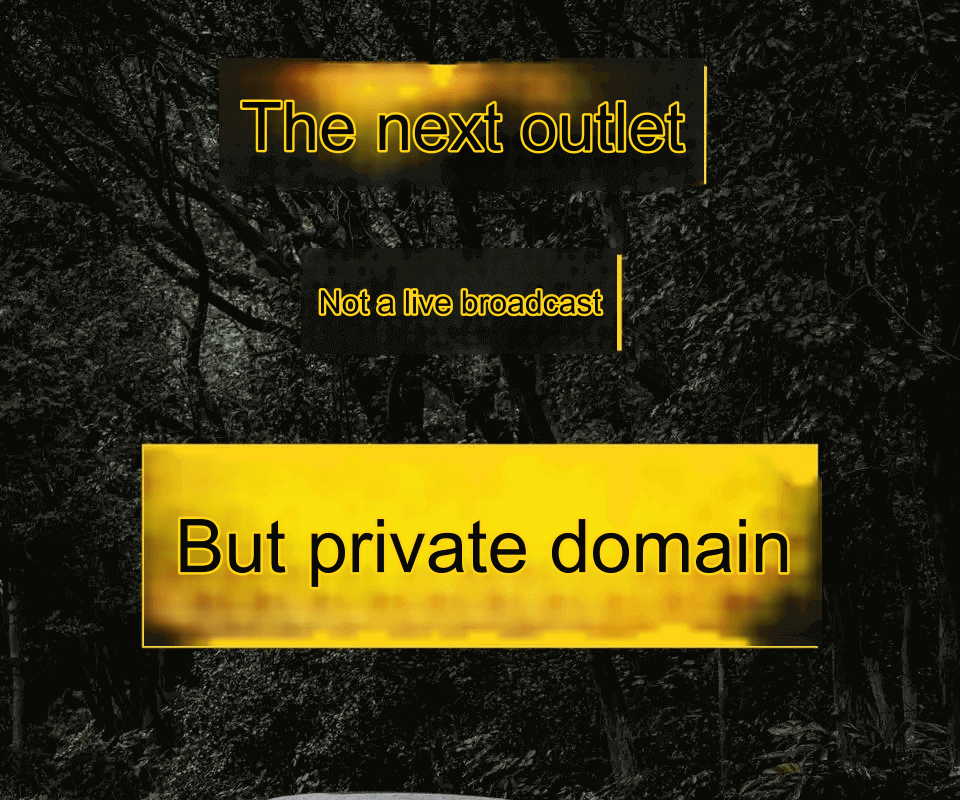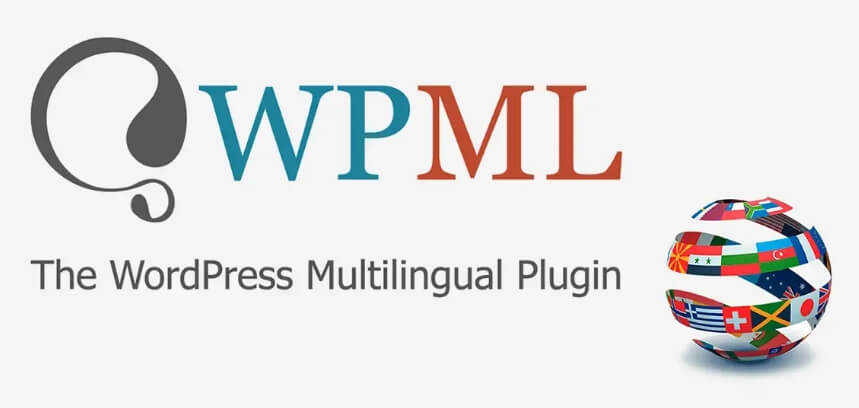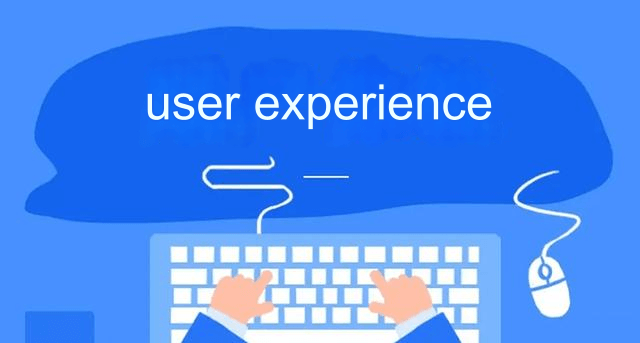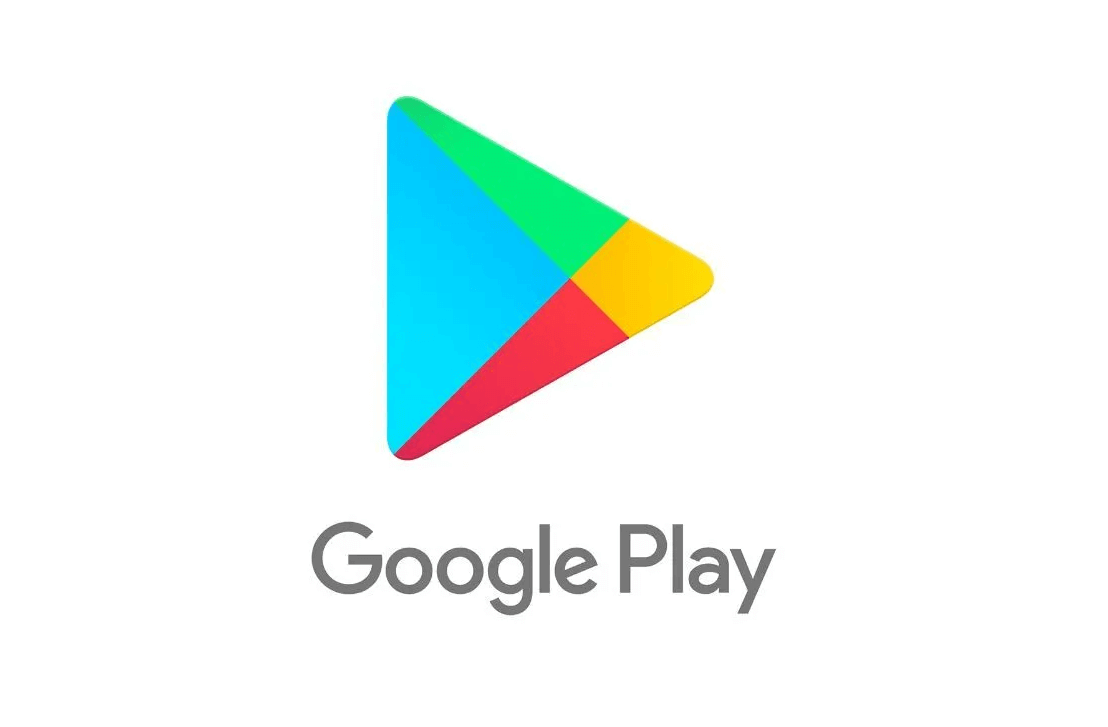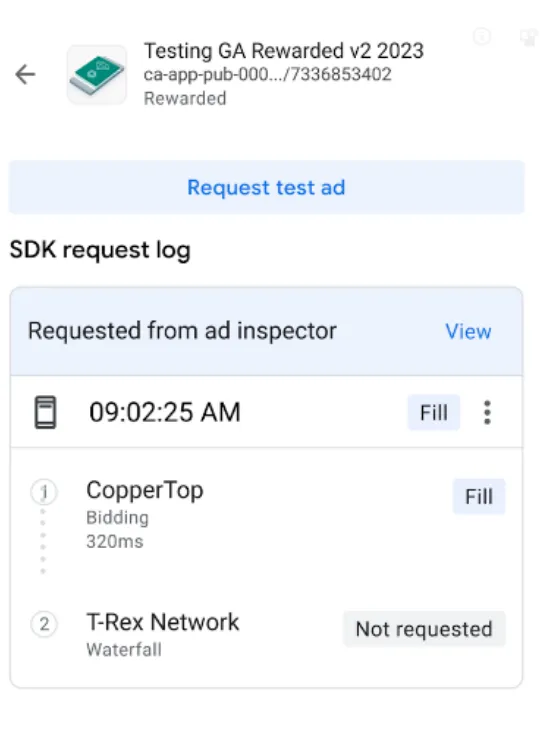The Google Play Store is one of the leading platforms for publishing Android applications worldwide. It is the first choice for millions of developers to release their apps. The Google Play Store has very strict regulations for app listings and updates. Therefore, I strongly recommend that you carefully read the guidelines in the Google Play Developer Policy Center as well as Google Play Policy updates before submitting or updating your app.
Even if you have thoroughly reviewed the relevant policies and guidelines, you may not completely avoid having your app rejected during the listing or updating process on Google Play. First, let’s understand the various outcomes of Google Play’s policy review.
01 Google Play Review Outcomes
-
RejectedIf an update to an existing app is rejected, the version published before this update will still be available on Google Play, so there is no need to panic. A rejected update will not affect the reputation of your Google Play Developer account. It is important to note that you should not resubmit the rejected app until the policy violation issues are resolved.
-
RemovedBeing removed is a more serious status. Once your app is removed, it will not be available on Google Play until you submit a compliant update. Additionally, your subscribers will cancel their future subscriptions. After you submit a compliant update for the removed app, the system will restore your user count, statistics, and ratings. However, there will be no refunds for previous subscriptions.
A single removal will not have an immediate impact on your Google Play Developer account's reputation, but multiple removals may lead to your account being suspended. Therefore, do not resubmit the removed app until the policy violation issues are resolved.
-
SuspendedIf an app is in serious violation or has multiple violations, or if it is repeatedly rejected or removed, Google Play may suspend your app. If your app is suspended, you will lose its user count, statistics, and ratings. This action will be considered a warning from the system regarding your Google Play Developer account, and it will affect the good standing of your account.
If your developer credentials maintain a good reputation in Google Play, and are applicable to your app, you can release a compliant new version of the app.
-
WarningGoogle Play will remove your app after the number of days specified in the first warning email. After the app is removed, users will not be able to download the published version of the app from Google Play until you submit a compliant update. If your app is suspended after receiving a warning, you need to appeal. Once you submit a compliant update for the removed app, the system will restore your user count, statistics, and ratings.
Warnings will not affect your Google Play Developer account's reputation.
02 Reasons for Rejection and Solutions for Google Play Apps
Google Play’s app review outcomes include five statuses: approved, rejected, removed, suspended, and warned. If your app fails to be listed or updated smoothly and encounters one of these statuses, you need to understand some of the main reasons why Google may reject your app, as well as the measures you can take to avoid such issues.
Reason 1: Inappropriate ContentTo ensure that Google Play remains a safe and civilized platform, Google has established a set of standards to define harmful or inappropriate content for users and prohibits such content from appearing on Google Play. If your Android app submitted for review contains any restricted content, it will be directly rejected by the Google Play Store. Common types of inappropriate content include:
-
Pornographic and Obscene Content: Apps that contain or promote pornographic or obscene content, including any obscene material or services related to sexual pleasure. Common types include excessively revealing clothing for in-app characters and/or sexually provocative poses inappropriate for public display, profanity, vulgar language, explicit text, or adult/pornographic keywords.
-
Hate Speech: Apps that promote violence or incite hatred against individuals or groups based on race or ethnicity, religion, disability, age, nationality, veteran status, sexual orientation, gender, gender identity, caste, immigration status, or other characteristics related to systemic discrimination/marginalization.
-
Violent Content: Primarily includes terrorism-related content and dangerous organizations and movements.
-
Sensitive Events: Apps that exploit sensitive events with significant social, cultural, or political impact (e.g., civil emergencies, natural disasters, public health emergencies, conflicts, deaths, or other tragic events) or lack sensitivity towards these events.
-
Bullying and Harassment: Apps that contain threats, harassment, or bullying content, or foster threatening, harassing, or bullying behavior.
-
Hazardous Materials: Apps that facilitate the sale of explosives, firearms, ammunition, or specific firearm accessories.
-
Cannabis: Apps that facilitate the sale of cannabis or cannabis products.
-
Tobacco Products and Alcoholic Beverages: Apps that facilitate the sale of tobacco (including e-cigarettes and vape pens) or encourage illegal or inappropriate use of tobacco and alcohol.
Solution:
Among all the inappropriate content mentioned above, the most common issue is the inclusion of pornographic content, especially in social or entertainment apps. Of course, there are exceptions regarding app content: if your app's content is primarily for educational, documentary, scientific, or artistic purposes and genuinely requires inclusion or promotion, it is not restricted.
If your app is rejected due to inappropriate content, you must make the necessary adjustments, remove the restricted content from the Google Play Store, and then resubmit it for review. You should not resubmit for review without making corrections, as repeated violations may lead to the permanent termination of your entire account from Google Play.
Reason 2: Violation of User-Generated Content GuidelinesUser-Generated Content (UGC) refers to content submitted by users to the app that can be seen or accessed by at least some users. UGC that is explicitly prohibited within the app includes pornography, harassment, bullying, etc. If your app contains these inappropriate or offensive contents and lacks a robust review, filtering, and reporting mechanism, it is likely to be rejected during submission.
Solution:
If your app includes or features UGC, you must continuously implement an effective UGC review mechanism:
-
Require users to accept the app's terms of use and/or user guidelines before creating or uploading UGC.
-
Define harmful content and behavior as per Google Play Developer Program Policies, and prohibit such content and behavior in the app’s terms of use or user guidelines.
-
Implement UGC review mechanisms reasonably and consistently based on the type of UGC hosted by the app.
-
In augmented reality (AR) applications, UGC review (including an in-app reporting system) must consider both offensive AR UGC (e.g., explicit AR images) and sensitive AR anchor locations (e.g., AR content anchored to military bases or other restricted areas, or anchored to private properties that may cause issues for property owners).
-
Provide an in-app reporting system for users to report offensive UGC and users, taking appropriate action against such UGC and/or users when necessary.
-
Provide an in-app system to block UGC and users.
-
Take precautions to prevent monetization of offensive user behavior within the app.
Developers can check whether their app has a comprehensive and effective review mechanism. Among all review mechanisms, the most common reason for rejection by Google Play is the lack of an adequate reporting and blocking mechanism.
Reason 3: Inappropriate Content RatingContent ratings on Google Play are provided by the International Age Rating Coalition (IARC) to help developers display appropriate content ratings to users based on local conditions.
To obtain a content rating, you must fill out a rating questionnaire in the Play Console, which includes questions about the nature of the app's content. The system will assign multiple content ratings provided by rating organizations based on your answers in the questionnaire. False statements about app content may lead to the app being removed or suspended.
In reality, many developers attempt to "trick" Google Play by lowering the content rating in the questionnaire to reach a larger audience, resulting in inappropriate content ratings and rejection.
Solution:
Google offers a simple solution for this—You have a second chance to fill out the questionnaire. In the re-rating review, you should provide all correct information about your app to help Google Play accurately rate your app and avoid rejection again.
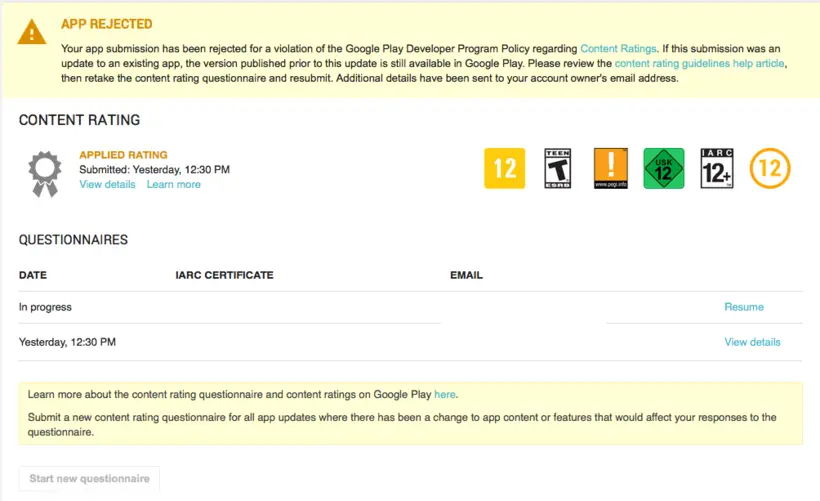
Reason 4: Metadata ErrorsGoogle Play does not allow any app to contain misleading, incorrectly formatted, non-descriptive, irrelevant, excessive, or inappropriate metadata, including but not limited to app descriptions, names, developer names, icons, screenshots, and promotional images. Here are common examples of metadata violations:
-
Unattributed or anonymous user praise: For example, using a positive review without a source in the description.
-
Comparisons of data between apps or brands: For example, claiming your app is better than competitor apps by XX%.
-
Keyword stuffing.
-
Using all capital letters outside of brand names.
-
Using unrelated special characters.
-
Using emojis, emoticons (including kaomoji), and special characters in titles or developer names.
-
Using misleading words or symbols.
-
Images or videos containing suggestive pornographic content.
-
App icons, promotional images, or videos depicting gruesome violent content.
Solution:
If your app is rejected due to metadata errors, you should modify the metadata according to the specific reasons for rejection.
Reason 5: Intellectual Property Infringement
Google clearly states that no application or developer account is allowed to infringe upon the intellectual property rights of others (including trademarks, copyrights, patents, trade secrets, and other proprietary rights), nor is any application allowed to incite or induce others to infringe on intellectual property rights.
As soon as Google receives a clear notice or report of alleged copyright infringement, it will respond. If Google confirms that your application infringes, your application will face removal from the store.
Solutions:
To understand and address infringement issues, let's first look at common infringement violations:
-
Using copyrighted content without authorization: For example, music, movies, TV shows, anime, celebrity photos, etc.
-
Inciting others to infringe on copyrights: Allowing users to stream and download copyrighted works (including music and videos) without authorization.
-
Trademark infringement: Improperly using the same or similar trademarks without authorization, which may lead to confusion regarding the source of related goods.
-
Counterfeiting: Selling or promoting counterfeit goods.
The above are common behaviors that constitute infringement violations, each of which is easy to fall into. For example, some video applications may use unauthorized music; some utility applications might “help” users download copyrighted audio and video; and some applications intentionally imitate the trademarks of well-known applications to mislead users.
If your application exhibits any of the above situations, it is always at risk of being removed. You should promptly rectify the situation, such as obtaining authorization or removing unauthorized content.
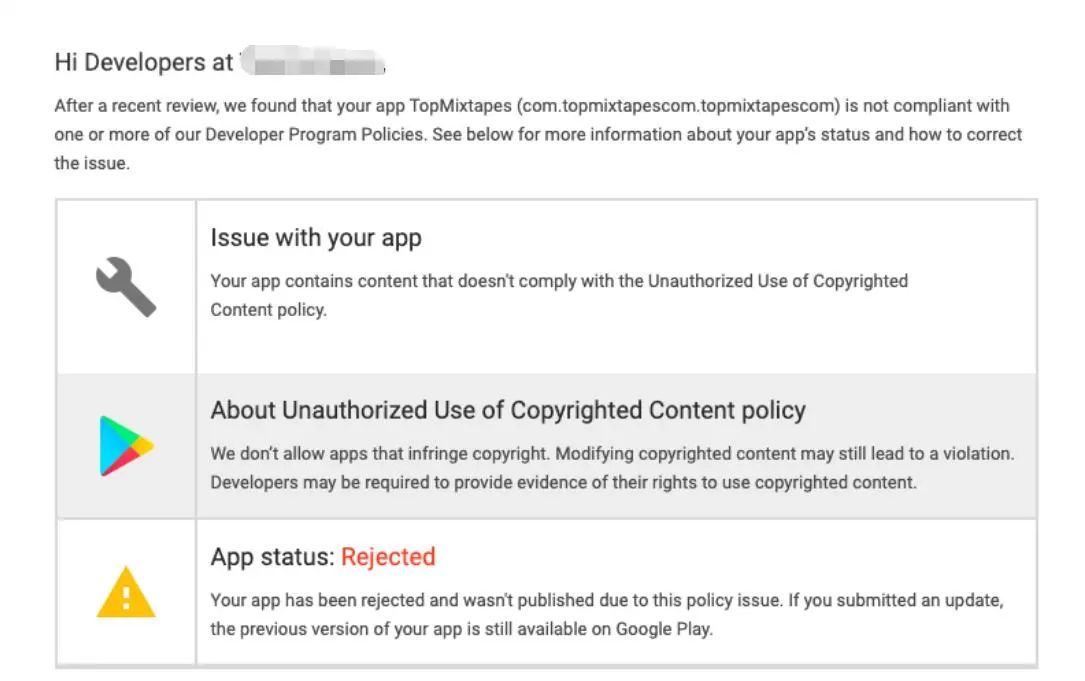
Reason 6: Lack of a Privacy Policy
Google places great importance on privacy and data protection, which is one of the main reasons applications are rejected from the Google Play Store.
Here are reasons related to privacy or data security that may lead to your application being rejected from the Google Play Store:
-
No privacy policy submitted in the Google Play Console and the app.
-
Google cannot identify that your app uses appropriate encryption (e.g., HTTPS) to securely collect and store user data, such as passwords, credit card numbers, medical records, etc.
-
Your privacy policy does not clearly state the data you are collecting.
-
Your privacy policy does not explicitly state how the collected data will be used.
-
Users find it difficult to locate your privacy policy.
-
Your application does not provide users with an option to consent to or refuse the collection of their data.
-
For citizens of the European Union and Switzerland, your application does not comply with the protections mentioned in the Privacy Shield principles.
-
Your application disrupts the user’s device in an unauthorized manner or accesses the device without requesting additional permissions, including but not limited to device location information, phone contacts, messages, and APIs.
Solutions:
You need to ensure that your application has a reliable privacy policy that Google can accept. If your application was rejected due to the privacy policy, please revise the policy and resubmit.
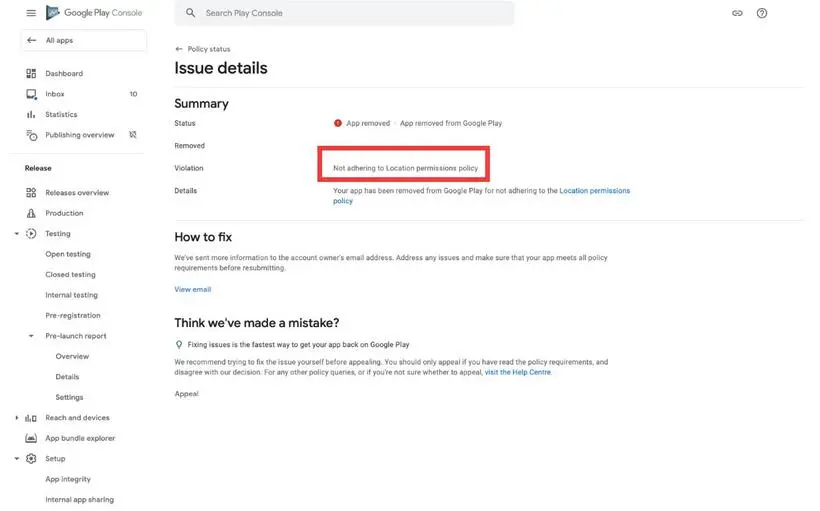
Reason 7: Lack of Basic Functionality in the Application
An application’s functionality should be unique and provide value to users. Additionally, the application should at least offer a basic level of functionality and a normal, complete user experience. If the application crashes or exhibits other behaviors that do not meet actual usage, it must not be published on Google Play.
If your application has any of the following situations, it may be rejected or removed from Google Play:
-
The application has no purpose or functionality.
-
The application continuously crashes, forcibly closes, freezes, or exhibits other functional abnormalities.
-
The application duplicates content from other applications without adding any original content or value.
-
Multiple applications are built with highly similar functionality, content, and user experiences.
-
The application repeatedly displays interstitial ads that interfere with user interaction and task execution within the app.
Solutions:
Ensure that your application operates correctly and provides valuable content or functionality to users.
Reason 8: Design Quality Issues
If your application adheres to the correct design guidelines, there is no need to worry about rejection. Google’s design guidelines outline all the fundamental principles required for building application UIs, and you should design your application according to these rules. Ensure that the fonts, colors, graphics, and other design elements of your application are aligned with Google’s guidelines; otherwise, your application may be rejected.
Solutions:
If your application was rejected due to design issues, I recommend investing some resources and time to redesign your application according to Google’s design guidelines. This is the best solution available in this case.
Reason 9: Presence of Malware in the Code
Malware refers to any code that may pose risks to users, user data, or devices. Due to the potential harm that malware can inflict on users, Google Play strictly prohibits the publication of applications that contain malware.
Malware includes but is not limited to potentially harmful applications (PHAs), binary or framework modifications, and covers categories such as trojans, phishing, and spyware applications.
Solutions:
Generally speaking, developers are aware if the application code contains risky code—most of the time, it is deliberately placed for specific purposes by the developers. If your application is rejected for this reason, you must remove the malware.
Reason 10: Need for Login Credentials or Other Authentication Descriptions
If specific conditions must be met (e.g., providing login credentials, based on login information details, obtaining membership, or performing other forms of authentication) to access your entire application or certain parts of it, you must provide all necessary details for users to access your application.
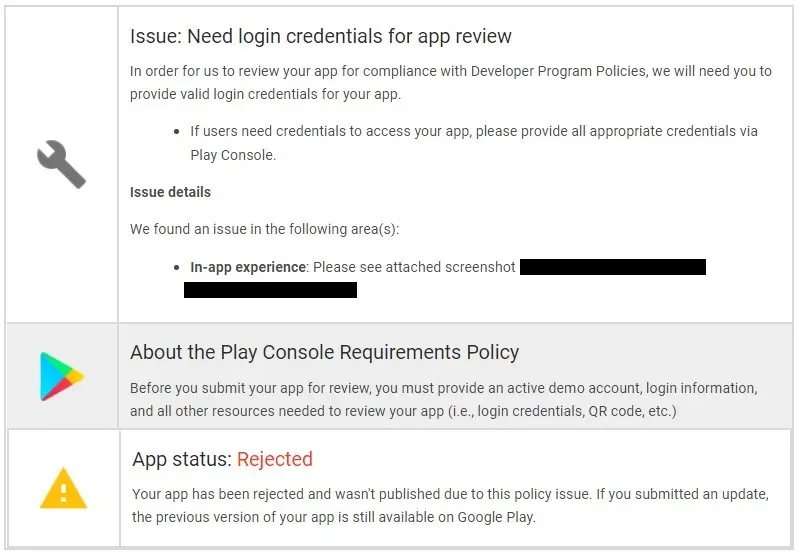
Solutions:
If your application was rejected for not meeting authentication conditions, you can follow these steps to add an explanation for application access:
-
Open the Play Management Center and go to the application content page (Policies > Application Content).
-
Under "Application Access," select Start. Note that if you have previously added an explanation for application access and want to change it, you will see Manage instead of Start, so please select "Manage."
-
Click + Add New Description and provide detailed information on access permissions. If your login mechanism has any special features (e.g., dynamic passwords, multi-factor authentication, or the login interface contains more than two fields), please indicate this through the "Other Information" field.
-
Save your changes.
Conclusion
Whether on Google Play or the App Store, application rejections are common occurrences. If your application is rejected from the Google Play Store, ensure that it complies with the guidelines of the "Google Play Store Submission Policy." If you believe your application fully complies with Google Play policies but is still rejected or removed, you can file an appeal using this form.
It is important to note that when your application is rejected, we always recommend carefully reading the email notification from Google Play. In most cases, you can make changes to your application to meet the relevant requirements and then resubmit it without filing an appeal.
References:
-
Google Play Developer Policy Center: https://play.google.com/intl/zh-CN/about/developer-content-policy/
-
Google Play Policy Updates: https://support.google.com/googleplay/android-developer/answer/9934569?hl=zh-Hans
-
Android Developer Design and Quality Guidelines: https://developer.android.com/design
